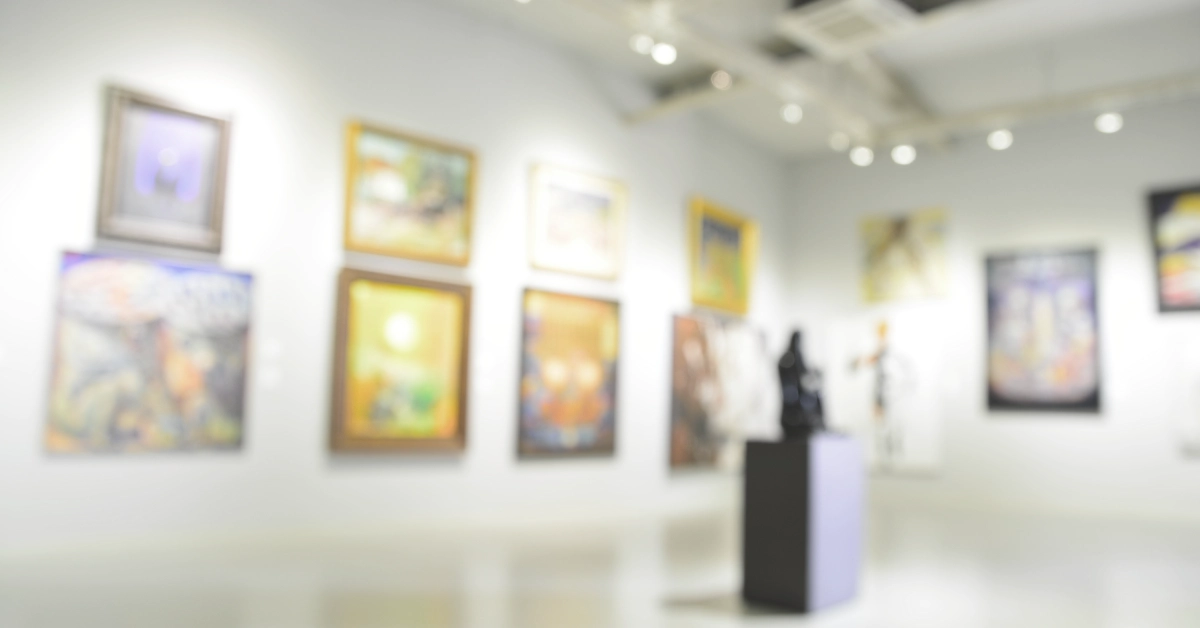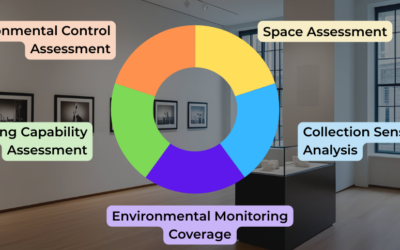Museum lighting guidelines are often overlooked despite light’s impressive role in deteriorating our collections. You probably understand relative humidity and temperature quite well, you know what you’re aiming for and how to measure it. Your data loggers in place and you feel confident about those two particular parameters.
But what about light? Are you equally confident about your light measurements, settings, and equipment? Do you know if you should be buying cool or warm lights? Do you know much about the effect your lighting setup is having on your visitors?
If the answer is no to any of these questions, here are seven open access articles and resources you can use to get yourself up to speed and start developing your own museum lighting guidelines
1) New Museum Lighting for People and Paintings (2019)
by Anya Hurlbert & Christopher Cuttle — (CLICK HERE TO VIEW)
“Museum lighting is no longer at a major crossroads, trying to decide whether to travel away from traditional incandescent and fluorescent lamps towards solid state lighting, but has already moved down that route, and is now seeking out the optimum paths through an ever-branching network.”
2) How is museum lighting selected? An insight into current practice in UK museums (2017)
by Daniel Garside, Katherine Curran, Capucine Korenberg,Lindsay MacDonald,Kees Teunissen & Stuart Robson — (CLICK HERE TO VIEW)
“It is presumed that in the absence of a shared best practice a great variability exists in the selection process from institution to institution, even though there are numerous publications which offer guidance on museum lighting specification.”
3) Impact of Illumination Correlated Color Temperature, Background Lightness, and Painting Color Content on Color Appearance and Appreciation of Paintings (2019)
by Francesca Feltrin, Francesco Leccese, Peter Hanselaer & Kevin A. G. Smet — (CLICK HERE TO VIEW)
“There are three main criteria for selecting an artwork’s illumination (Carvalhal et al. 2005): (1) replicating the lighting configuration intended by the artist or the one under which the artist painted or sculpted the piece, (2) the specific effect or interpretation intended by the curators, or (3) the preference and visual impressions expressed by observers as tested in carefully controlled experiments.”
4) Consideration of Light Level in Specifying Light Source Color Rendition (2018)
by Minchen Wei,Wenyu Bao &Hsin-Pou Huang — (CLICK HERE TO VIEW)
“When specifying light source color rendition for such a low illuminance, it is unclear whether the criteria identified in the past studies can be used, because none of these past studies investigated how color preference under a source varies with illuminance.”
5) Assessing the Impact of LED Lighting on the Stability of Selected Yellow Paint Formulations
by Emma Richardson, Elizabeth Woolley, Asya Yurchenko & David Thickett — (CLICK HERE TO VIEW)
“Following an artificial aging regime, color shift was evaluated using colorimetry and molecular alterations were monitored using attenuated total reflectance–Fourier transform infrared spectroscopy coupled with multivariate analysis.”
6) Interpreting Art with Light: Museum Lighting between Objectivity and Hyperrealism (2019)
by Thomas Schielke — (CLICK HERE TO VIEW)
“By analyzing the artwork’s brightness, contrast, and light atmosphere, curators can appropriately specify lighting for the room and exhibit to aesthetically establish a common link between the observer and the artwork or to realize a modification for emphasizing a conceptual idea.”
7) Preferred illumination for paintings: Cool-warm balanced colour temperature predicted from radiometry and colorimetry (2016)
by Ralph William Pridmore — (CLICK HERE TO VIEW)
“Major factors to be considered when designing lighting for paintings include colour discrimination, colour diversity, clarity and the balance of cool–warm (bluish-yellowish) lighting.”
–Bonus!–
Book of Abstracts for the Museum Lighting Symposium and Workshops (2017)
by various authors — (CLICK HERE TO VIEW)
“While LED technology allows for novel applications such as optimisation of the spectrum for vision and/or preservation, it has revealed inadequacies in existing colour reproduction measures, has not yet proven to be cost effective, and has raised concern over light induced damage.” Don’t feel like reading? The presentations from the Symposium are available on YouTube.
Conclusion
If your institution doesn’t already have museum lighting guidelines, we hope that the peer-reviewed sources above will help you get your feet wet on the kinds of topics lighting professionals have been talking about. Should the above sources feel too advanced for you, make sure you check out the article on Light in our Definitive Guide to Environmental Monitoring for Collections for a simplified introduction.
If you still feel unsure, don’t forget that the best place to start sometimes is to just start measuring! You can use handheld lux meters and go around your galleries taking down notes, or you can place data loggers with light sensors in them to get continuous readings over time.
Conserv sensors will even send you light level alerts so you will know when lights are on or off in specific rooms. Place them in a space and watch the light readings roll in. Oh, and in case you didn’t know, our Senior Conservation Liaison, Claire Winfield, led her institution’s light monitoring efforts for 7 years, so that we have some staff to help guide you along the way.

Claire Winfield Senior Conservation Liaison @ Conserv
If you have any questions about environmental monitoring, integrated pest management, or just want to talk about preventative conservation, please reach out to us! Don’t forget to check out our blog or join our community of collections care professionals where you can discuss hot topics, connect with your peers or even take a course to get familiar with the Conserv platform.




